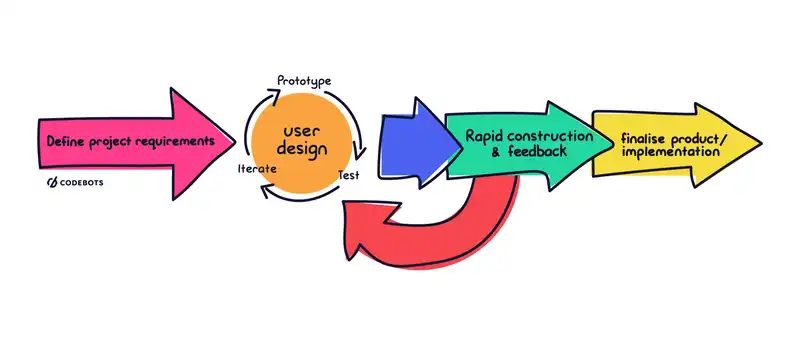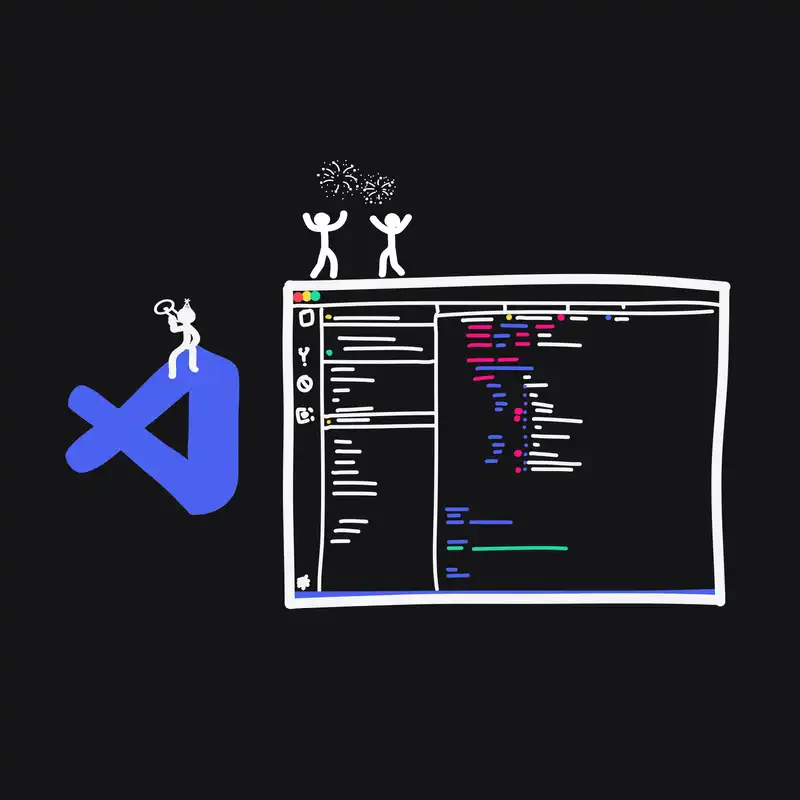Rapid application development (RAD) is a methodology that focuses on developing applications rapidly through frequent iterations and continuous feedback. As the increasingly competitive software market emphasises a stronger demand for new applications, the IT industry is feeling pressure to deliver working products faster, and RAD is becoming a necessity.
The RAD framework was introduced by technology consultant and author James Martin in 1991, who recognised and took advantage of software’s infinite malleability to design development models. RAD was a precursor to agile project management, becoming increasingly popular with agile businesses looking for methods that keep pace with their growing business and client needs. Focusing on rapid prototyping, release cycles and iterations over costly planning, rapid application development is driven by user feedback, rather than strict planning.
The need for rapid application development has seen the emergence of a plethora of low code and no code platforms. This demand is something Codebots is extremely passionate and proactive about catering to. Using our code-writing bots, you can rapidly develop applications and build 8.3x faster than you would be able to in standard software development.
Traditional software development methods, like waterfall, follow rigid process models that put pressure on customers to sign off on requirements before a project starts. Customers often don’t see a working build for several months, which complicates the change process for new requirements and feasibility adjustments.

Rapid application development alleviates the complications found in traditional software development methods, focusing on customer satisfaction through early and continuous delivery of valuable, working software. While speed is emphasised, specific time frames are not recommended. RAD welcomes changing requirements, even late in development. All stakeholders communicate frequently and in real time to measure progress, solve problems, and improve efficiency. Having the customer actively involved throughout the development cycle reduces the risk of non-conformance with user requirements, saving time and money.
What are the phases of Rapid Application Development?
A rapid application development cycle consists of four steps:
- Define project requirements;
- Prototype;
- Rapid construction & feedback gathering; and
- Finalize product / implementation.
The key principle of the RAD process is a reduction in planning to focus on a highly iterative design and construction process, enabling teams to accomplish more in less time, without impacting client satisfaction. The prototyping and rapid construction phases may be repeated until the product owner and users are satisfied that the prototype and build meets the project requirements.

1: Define project requirements.
The rapid application development cycle begins with stakeholders defining a loose set of project requirements, equivalent to what would be accomplished during project scoping in traditional development cycles. This planning stage is brief - emphasizing a higher priority on prototype iterations - but critical to the ultimate success of a project.
All project stakeholders - developers, clients, software users and teams - communicate to determine the project’s requirements, and strategies for tackling potential issues that may arise during development. Requirements include goals, expectations, timelines and budget. The client provides a vision for the product, and in collaboration with other stakeholders, research is conducted to finalize requirements with each stakeholder’s approval. Ensuring every stakeholder is on the same page early in the development cycle assists teams with avoiding miscommunication and costly mistakes. That being said, one of the key principles of RAD is the ability to change requirements at any point in the development cycle.
2: Prototype.
Once a project has been scoped, teams begin building out the initial models and prototypes. The goal is to rapidly produce a working design that can be demonstrated to the client. Developers and designers work hand-in-hand with clients until a final product is ready, to ensure the client’s needs are being met. This step is often repeated as often as is necessary as the project evolves. During this early stage prototyping, it is common for developers to cut corners in order to produce a working product that is acceptable to the product owner.
The use of rapidly built prototypes encourages user involvement, testing, and feedback on a live system, rather than attempting to make abstract evaluations of a design document. The nature of this consistent feedback enables developers to adjust models incrementally until project requirements are sufficiently met. Stakeholders communicate and learn through experience, quickly and easily identifying what does and doesn’t work. The rapid nature of releases means errors are far more likely to be discovered earlier, which leads to a reduction in errors and debugging.
Through prototyping, the development team can easily evaluate the feasibility of complex components. Consequently, software is more robust, less error-prone, and better structured for future design additions.
3: Rapid construction and feedback gathering.
Rapid construction is where application coding, system testing, and unit integration occurs, converting prototype and beta systems into a working model. This phase may also be repeated as required, supporting new components and alterations. Generally, teams use low-code or rapid application development tools to quickly progress the application.
Since the majority of user problems and client changes are addressed during the iterative prototyping phase, developers are able to construct a final working model faster than they would following a traditional development approach. Software and applications are thoroughly tested during this phase, ensuring the end result satisfies client expectations and objectives. Developers work with clients and end users to collect feedback on interface and functionality, and improve all aspects of the product.
Clients give thorough input throughout this stage, suggesting alterations, changes, or new ideas that solve problems as they are discovered. Clients may find that in practice, some concepts don’t work. With this input, developers either resume prototyping, or if feedback is strictly positive, move onto the final step.
4: Finalise product / implementation.
The final phase of rapid application development is where developers address the technical debt accrued in early prototyping, optimising implementation to improve stability and maintainability as they finalise the product for launch. Components are moved to a live production environment, where full-scale testing occurs to identify product bugs.
The implementation phase is where development teams move components to a live production environment, where any necessary full-scale testing or training can take place. Teams write thorough documentation and complete other necessary maintenance tasks, before confidently handing the client a complete product.
Advantages of using rapid application development methods.
A rapid application development approach has a plethora of benefits for both software teams and their clients. With speed and agility as a priority, IT teams observe a boost in productivity that enhances project outcomes and enables delivery in a matter of days or weeks. The following are some of the key advantages of using a RAD method:
Early system integration & risk reduction.
RAD teams quickly create and share working prototypes, allowing businesses to review functionality earlier in the software life cycle. The frequent iterations and nature of feedback allow all aspects to be easily evaluated, enabling measurable progress that determine if schedules and budgets are on track. Integration with other systems and services traditionally occurs at the end of a development life cycle, but rapidly developed applications are integrated almost immediately. Testing occurs during every iteration, enabling stakeholders to quickly identify and discuss errors, code vulnerabilities or complications, and immediately resolve them without impacting the progress of development. A reduction in risk means a reduction in the cost.
Adaptability and compartmentalisation of system components
During development, software is malleable. Changing code can dramatically alter the entire system, and developers can take advantage of this flexibility by iterating and prototyping potential concepts throughout development. This iterative nature encourages designers and developers to create components that are functional and independent. Each element is compartmentalised, which increases reusability of components, and makes modification easily adaptable to the needs of software evolution.
Iterative releases & faster time to market.
Use of low-code and RAD development tools empower businesses and IT teams to effectively collaborate and deliver new, production-ready applications faster, by reducing time spent on manual coding. Skilled team members can quickly produce prototypes and working code that may otherwise take weeks or months. Fewer team members are required, which boosts productivity. Frequent iterations encourage breaks projects into smaller, manageable tasks, assigned to team members based on specialty and experience. Businesses get a working product delivered in a shorter time frame, and can benefit from early availability while new functionality continues to be released.
Constant user feedback.
RAD’s nature of easily and frequently obtaining relevant feedback from users who interact directly with applications during development and prototyping is invaluable. Regular communication and constant feedback increases overall efficiency and quality. The iterative design and access to UI/UX components of a system puts feedback at the forefront of the process. Traditionally, developers work in silos devoid of feedback, so receiving feedback can be inherently difficult, time consuming and costly, involving long meetings and phone calls. RAD increases customer satisfaction levels through a commitment to a high level of collaboration and coordination. Clients work hand-in-hand with developers, who have the opportunity to frequently present work, and gain confidence that they are on track with satisfying the client when the final product is delivered. The incorporation of testing throughout the project lifecycle improves the overall software quality, validating and refining requirements based on user feedback.
Disadvantages of using rapid application development methods.
While RAD hosts a range of appealing benefits, the methodology is not universally suitable. For example, RAD doesn’t work particularly well for smaller projects, where technical risk is especially high. The following are some complications or disadvantages with RAD:
Reliance on a technically strong team.
RAD has a high dependency on modelling skills and requires experience with rapid adaptation based on component evolution. A technically strong team is essential to adequately identify and deliver business requirements. Smaller teams can incorporate RAD more easily, as they have direct access to each other and communication is simple. When projects require inter-team communication, development cycles invariably slow. It takes longer to align all stakeholders on business requirements, further complicated by RADs enablement of constant evolution. Documentation is completed in the final phase, so problems and progress are harder to track, which significantly impacts scalability.
Demanding interface focus.
Clients assess a solution’s quality based one what they can interact with in a prototype. RAD requires frequent iterations and prototypes, and client’s expect to experience significant progress with each new release, but prototypes are often a facade. While developers are driven to find the best solution, sometimes they must forego best practise on the backend to accelerate development in the front-end prototype. This incurs technical debt, which may cause more corners to be cut when it’s time to deliver a working application as teams race to meet deadlines and avoid refactors.
Requires a high level of commitment from all stakeholders.
With most traditional software development methods, like waterfall, clients and development teams spend most of their time apart. The RAD model requires a frequent cycle of prototypes, and consequently, all stakeholders must be willing and able to commit to regular meetings to communicate and provide feedback frequently.
Requires modular systems and is difficult for large-scale projects.
Rapid application development methods reduce control and restrictions, offering greater flexibility during prototyping and development. Adequately managing flexibility and volatility within the scope of a project may cause complications for larger applications. Time boxing may cause some features to be delayed in order to complete short release cycles. Each component should be modular to allow elements to be easily imported and customized. RAD is particularly useful for systems that are component-based and scalable, but suitable for more feature-rich projects that require longer development times.
What projects are suitable for rapid application development?
RAD is a good method for fast-paced environments with experienced teams that have the budget for rapid application development tools, like low-code platforms and code generators. RAD is particularly useful for small businesses delivering innovative products in a competitive market place that require a high degree of business involvement. The on-the-fly approach accommodates unexpected changing of requirements. When projects have tight deadlines, rapid application development methods hold teams accountable to deliver a working product as quickly as possible.
RAD should only be used when a system can be modulated to be delivered incrementally. If you need to build an internal business tool or a customer facing portal, RAD can assist you to deliver better experience to your end users. If software is mission critical however, and technical risk is high, i.e. outcomes affect people’s lives, a RAD approach is inappropriate.
Consider to following checklist to assess if a RAD approach is right for you.
- Do you have an experienced team who can commit to an intensive and ongoing development process that involves a high degree of communication?
- Is your client open to this approach, and the level of hands-on involvement required? If not, communication breakdowns may cause projects to fail.
- Is your client willing to adhere to project timelines and a schedule for model completion? All stakeholder have to be on board to effectively apply this methodology.
- Can the system be modularised within a 2-3 month period?
- Do you have the right communication and development tools and software to effectively apply RAD? If not, do you have the budget to afford required tools, including additional skilled team members if necessary?
- Is the technical risk low?
Build 8.3x faster with Codebots.
Adopting a new process requires buy in from all stakeholders. Rapid delivery accentuates reusability of components in order to reduce overall development time, and this can only be successful with a strong, invested team.
Codebots takes rapid application development to the next level, assisting users with planning, testing, building, and version control of their software applications. Our diagram editor allows multiple people to work concurrently, to increase collaboration and productivity. Much of our functionality - our extensions - have been pre-built so users can drag-and-drop core application elements to save further on time and money.




